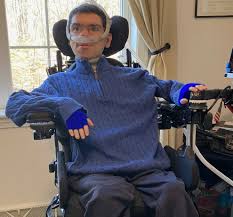Duchenne Muscular Dystrophy:

The Ministry of Social Justice & Empowerment, Government of India, observes World Duchenne Muscular Dystrophy Day every year on 7th September.
- It is a rare genetic disorder which is characterized by progressive muscle degeneration and weakness.
- It is caused by a genetic problem in producing dystrophin, a protein that protects muscle fibers from breaking down when exposed to enzymes.
- It was first described by the French neurologist Guillaume Benjamin Amand Duchenne in 1860.
- It is a multi-systemic condition, affecting many parts of the body, which results in deterioration of the skeletal, heart, and lung muscles.
- The dystrophin gene is found on the X-chromosome, it primarily affects males, while females are typically carriers.
- It can begin as early as age 2 or 3, first affecting the proximal muscles (those close to the core of the body) and later affecting the distal limb muscles (those close to the extremities).
- Usually, the lower external muscles are affected before the upper external muscles.
- The affected child might have difficulty jumping, running, and walking.
- Other symptoms include enlargement of the calves, a waddling gait, and lumbar lordosis (an inward curve of the spine).
- Presently available treatments are gene therapy, exon skipping, stop codon read-through and gene repair.




